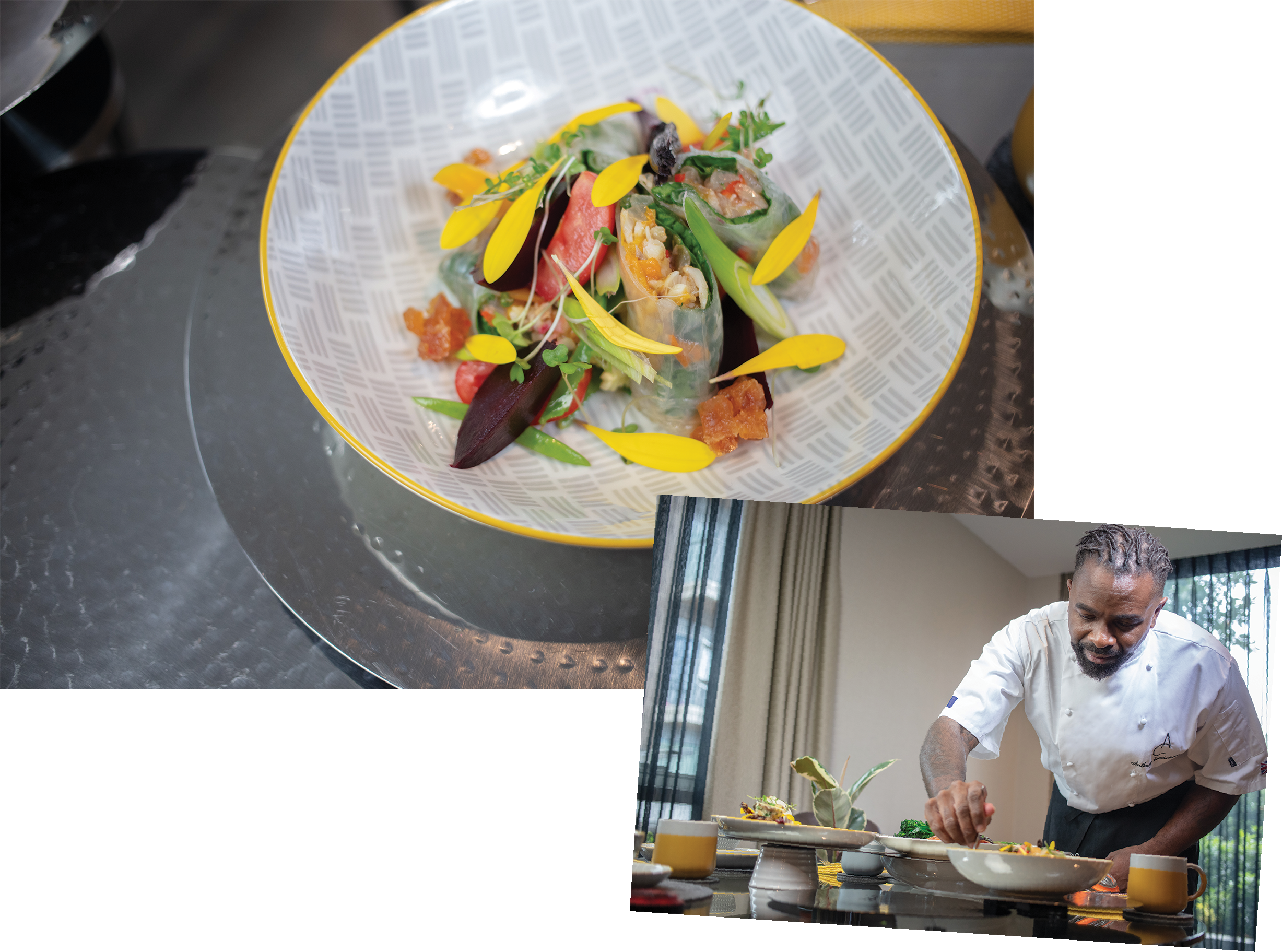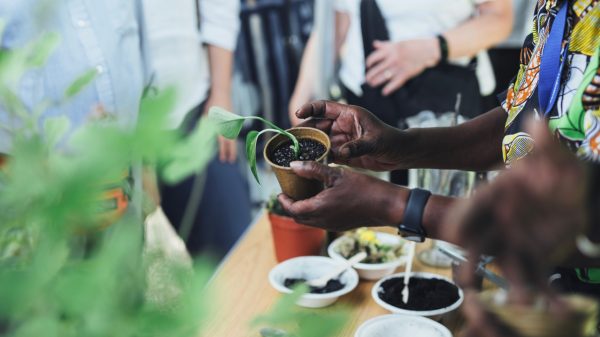There is nothing more emblematic of a culture than its food. Maybe its the fact that it is the only element that can excite all of our five senses at once.

My earliest memories often revolve around my Grandmother’s kitchen. I could not have been more than four, but I can close my eyes and still hear the sound of the plantain frying on the open stove, from which I would get a Medusa-like death stare if I ventured near, married with that sweet smell arising from the frying pan was a far richer aroma of the curried goat. I can see the bright green of the breadfuits and almost fluorescent orange of the sweet potatos and ultimately the texture and feel of the goat meat melting in my mouth as my taste buds went into overload.
This symphony of senses is the most evocative memory of my childhood.
I remember finding it hard to believe that the origins of the cuisine that held me spellbound each Sunday afternoon was from food that others would not eat.
Goat was too tough, no self respecting person would eat a tail of an animal, while oxtail my favourite treat. But we in the Caribbean learnt how to prepare, cook and create a cuisine from the animal parts and plants that no one wanted.
However in the UK in the 1970’s such ingredients were not easy to find. My Grandmother and I would often have to criss-cross North London by bus in search of ackee or yams, for Sunday’s dinner. Today, fortunately, that has changed, and we just have to pop down to our local Sainsbury’s to pretty much find all the ingredients that my Nana and I would spend over four hours on a Saturday morning trying to gather. For my Nana, food was love, and she poured her heart into creating every Sunday meal for her family, nothing was too much effort and everyone was welcome.
For many of us there is no more joyous an activity than eating and sharing that time with the people you love and care about. Today our dishes may have evolved a little and thanks to Sainsbury’s it is infinitely more convenient to gather the ingredients, but there is nothing like creating our own symphony with our friends and family, while knowing we are honouring our traditions and continuing the legacy of our mothers and grandmothers. Food is love and Caribbean cuisine is love with a soulful calpsyo beat.
Anthony Cumberbatch, a Michelin trained chef with over 28 years of culinary experience, has been at the forefront in the evolution of African-Caribbean cuisine into a fine dining experience. Below we have a set of his new recipes which takes Ackee and Saltfish, which like so many of the dishes, began traditionally as cheap food that poorer communities ate, and created a dish that many restaurants would be proud to have on their menu. CJ Cushnie

Soused Mackerel, Ackee and Salted Fish Cured Moneybags
Ackee and Salted fish
Dish Ingredients Element 1
- 50 grams boneless salted codfish
- 237ml vegetable oil
- 5 grams garlic, finely chopped
- 1 sprig of fresh thyme
- 25 grams onion, finely diced
- 15 grams tomato, diced
- 1 scallion, chopped
- 20 grams bell pepper, diced
- freshly ground black pepper, taste
- ground pimento, to taste
- 1 scotch bonnet pepper pierced
- 60 grams can ackee, drained
For The Wrap
- 5 sheets of spring roll wraps
- 1 egg, for the wash
Method
- Soak salt codfish in water overnight, if needed, boil to get rid of excess salt. Set aside.
- Add about 2 Tablespoons of vegetable oil to the pan. Followed by onions, garlic, thyme, and green onions.
- Sauté for about a minute, stirring occasionally to prevent any burns.
- Followed by tomatoes continue cooking for about 3 minutes then add, hot pepper, white pepper, mix until ingredients have been thoroughly combined. Cook for about 5 minutes or more. Add the salt fish flakes, then the thyme.
- Cook for a further 3 minutes then add the ackee fruit and toss. Making sure that the ackee doesn’t break up in the mixture.
- Check for seasoning.
- Place the ackee and salted cod fish on a tray and leave to cool down
- For the moneybags, cut the sheets of spring roll into squires and leave one of the sheets for 1 cm strips for the tying.
- Place one sheet of the squires on the work surface. Using the egg for the egg wash, lightly brush the pastry squire then place another one on top.
- Then place a teaspoon of ackee and salted codfish mix in the middle of the sheets.
- Fold the sheets inwards to make a pouch, then egg wash the strips and tie the top of the moneybags. Then repeat.
- Then fry the moneybags in a deep fat fryer at 180 degrees. Cook until golden brown and then serve.
Soused Mackerel
Dish Ingredients Element 2
- 150ml white wine vinegar
- 1 small carrot, thinly sliced, julienne
- 1 banana shallot, finely diced
- 4 allspice berries, slightly crushed
- 8 whole black peppercorns
- 2 cloves
- 1 tbsp sugar
- 2 mackerel fillets
- 25 grams cucumber, finely diced
- 5 grams flat parsley, cut into strips
INSTRUCTIONS
- Put the vinegar, 150ml water, carrot, shallot, allspice berries, peppercorns, cloves, sugar and 1 tsp salt in a pan and bring to the boil. Gently simmer for 10 mins until the carrot is just cooked, then take off the heat and allow to cool slightly.
- Lay the mackerel fillets, flesh-side down, in a shallow dish and pour the sousing liquid on top, allow everything to cool, add the cucumber and flat parsley, then cover with cling film and place in the fridge for 24 hrs.
- The following day, drain the mackerel fillets from the liquid and cut into slices.
Then serve.
Credit: Chef Anthony Cumberbatch (courtesy of The Voice Newspaper).
https://www.sainsburys.co.uk/shop/gb/groceries/new—trending/black-history-month
































































